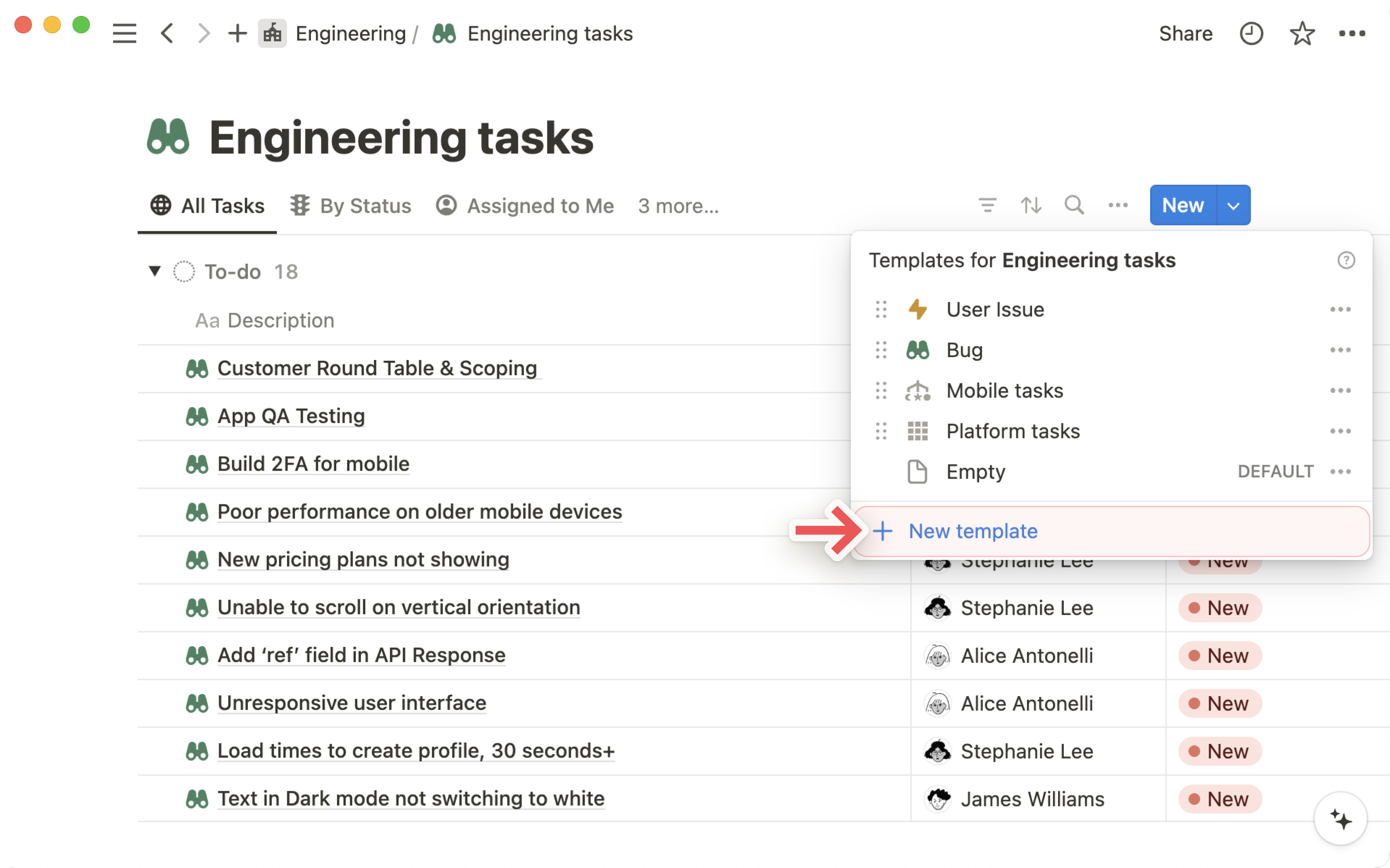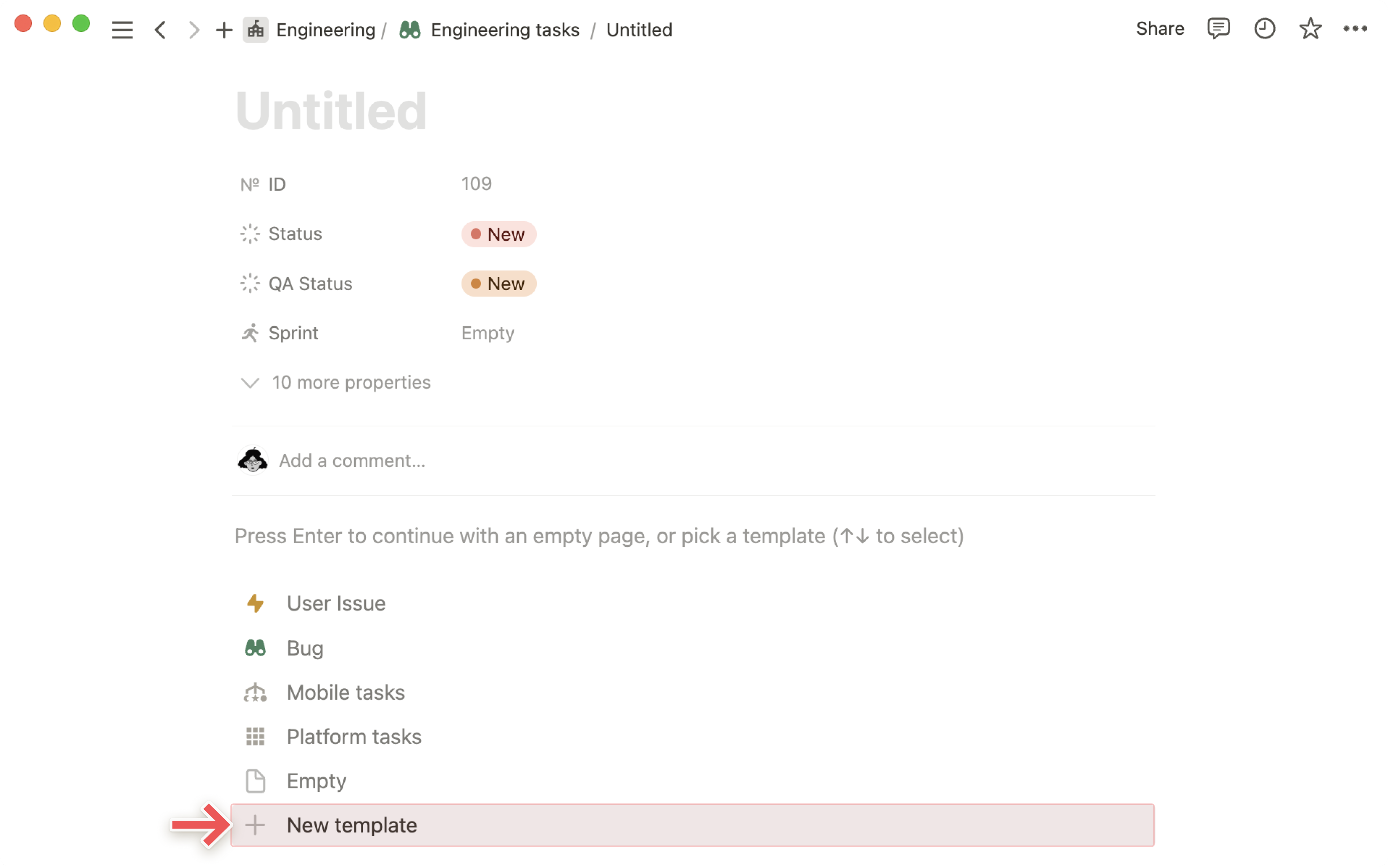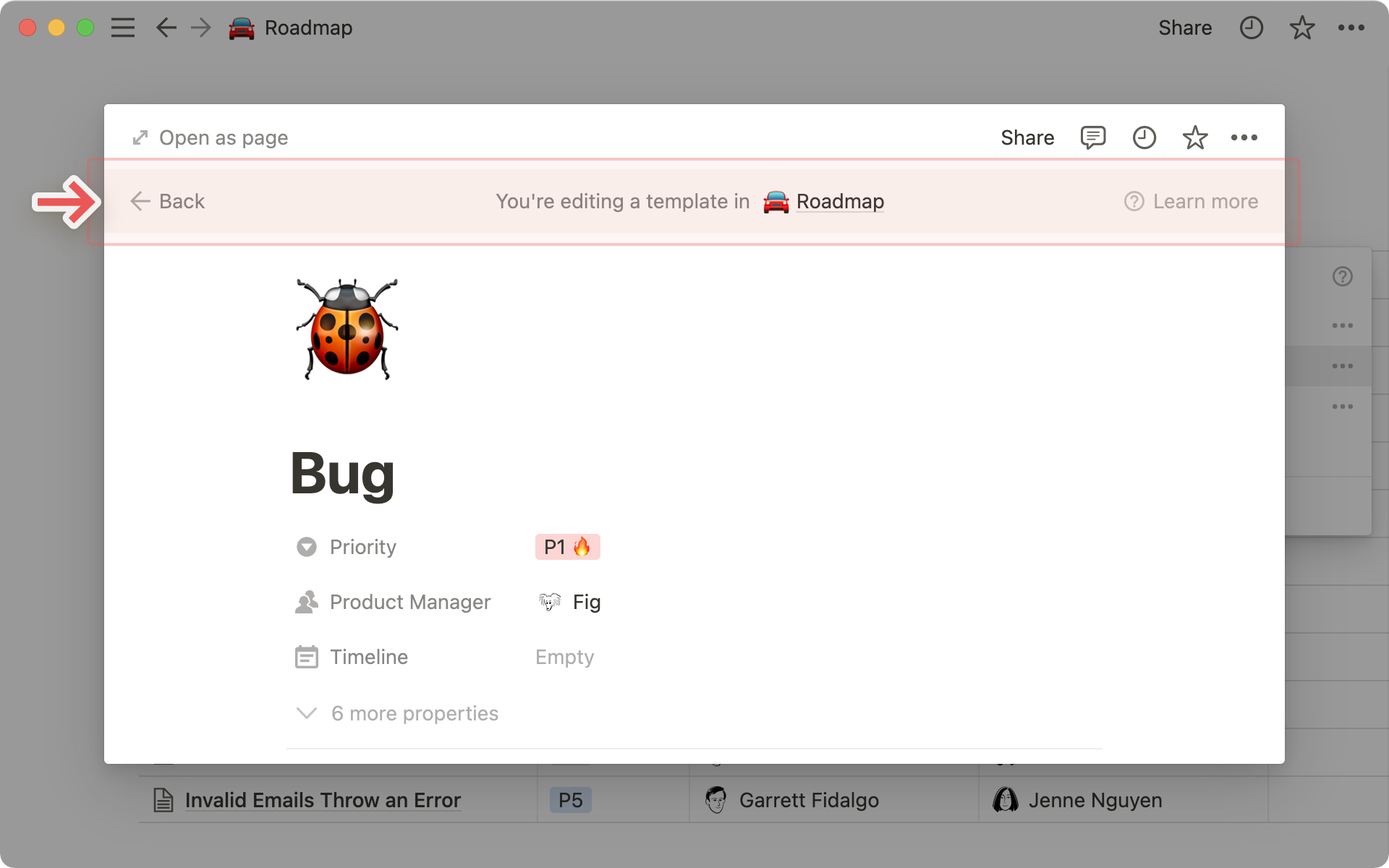Database templates

Most databases contain the same types of pages created over and over again. Think of weekly meeting notes, bug reports, or design specs. To make this easy, database templates let you define and replicate certain page structures with one click 🖨
Gå till vanliga frågorTo create a template inside a database, open the dropdown next to + or New at the top of your database. Then, select New template.

You can also create a template from a new page. If you have no database templates already, you'll be prompted to create one in the body of the new page by selecting New template.

Obs: Håll muspekaren över infogade databaser för att se knappen Ny . Du kan även klicka på ••• och välja Mallar för att skapa eller komma åt befintliga mallar.
When editing a new or existing template, you'll see a bar across the top indicating which database it's located in.

Whatever you title this page will be the name of the template you use going forward. For instance, you might title this one Bug.
On this page, you can define properties for your template. For example, you can create a template for bug reports that automatically puts P1 in the Priority property and assigns the user Fig to the Product Manager property. You can also add content in the page itself.
Templates can contain any type of content, including images, embeds, and sub-pages. Whatever you choose will show up identically on each page created with the template.
Obs: Om du lägger till en relationsegenskap till en mall bör du inte fylla i den om du inte vill att alla sidor du skapar med mallen ska relatera till samma befintliga sidor.
Create a new page in your database and choose any of the templates from the gray menu it contains.
You can also click the dropdown menu on the right of the blue
Newbutton at the top right of your database. Choose any template you've created to generate that type of page.Give the page a unique title.
Once you've created a new page with a template, you can make any changes you want to the content that appeared.
Repeating database templates automatically create a copy of a template in your database however often you would like.
Create a repeating database template
To create a repeating database template:
Open the dropdown next to
Newor+(depending on your screen size) at the top of your database.Next to the database template you want to repeat, select
•••.Open the dropdown next to
Repeat.You can make your template repeat daily, weekly, monthly, or yearly. Indicate how many weeks, months, or years you want in between repeats, as well as your start date and the time you want your database template to be repeated.
Nesting database templates
You may want to create a database inside of a recurring database template, with that database having templates of its own. While this is possible, be mindful of the limitations:
You can’t nest a template within a template that recurs daily. You can only nest a template within a template that recurs weekly, monthly, or yearly.
You can only have three levels of nesting per database template.
Open the dropdown next to
+orNewat the top of your database.Click
•••next to the template you want to edit and clickEdit. Make your changes in the editing view that pops up.The same
•••menu also lets you duplicate or delete a template.
Vanliga frågor
Är mallarna som jag skapar i en databas tillgängliga i alla andra databaser i arbetsytan?
Nej, de är bara tillgängliga i de specifika databaserna där du skapade dem. Du kan definiera nya mallar för varje ny databas som du skapar.
Hur fungerar relationsegenskaper med mallar?
Du kan skapa relationsegenskaper i databasmallar, men vi rekommenderar inte att du definierar dem om du inte vill att alla sidor av en viss typ ska vara relaterade till samma sidor.
Finns det någon gräns för hur många mallar för databaser jag kan skapa?
Nej! Du kan skapa så många du vill!
